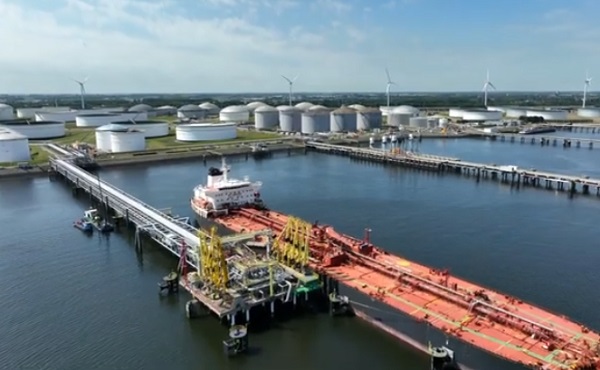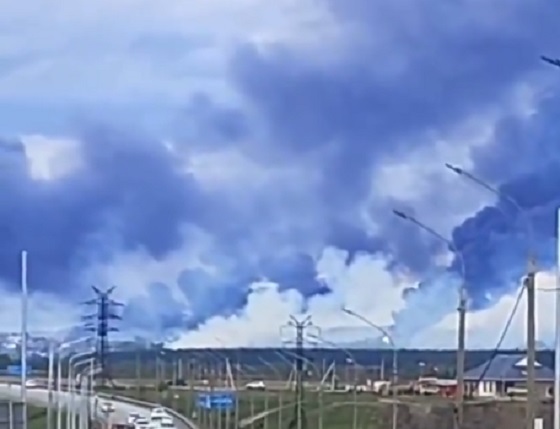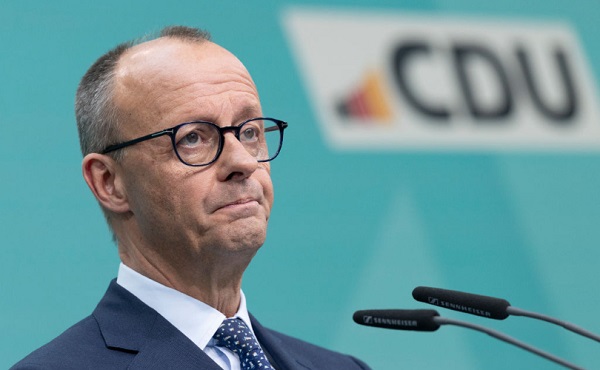National
Majority of Canadians want feds to focus on illegal gun smuggling not gun buyback program

By Gage Haubrich
The National Police Federation, the union representing the RCMP, says Ottawa’s buyback “diverts extremely important personnel, resources, and funding away from addressing the more immediate and growing threat of criminal use of illegal firearms.”
The Canadian Taxpayers Federation released new Leger polling showing 55 per cent of Canadians think that stopping illegal gun smuggling is the most effective way to reduce gun crime.
“The poll shows that Canadians know the real problem is illegal gun smuggling, not firearms owned by licenced Canadian gun owners,” said Gage Haubrich, CTF Prairie Director. “Planning to spend potentially billions of dollars on a program that Canadians don’t think is effective is a waste of money.
“Law-enforcement experts are telling Ottawa to focus on smugglers instead of licenced gun owners and this poll shows Canadians agree with that commonsense reality.”
The federal government originally announced the gun ban and buyback scheme in 2020. The government has started collecting firearms from businesses, but the government has not yet taken a single gun from individual Canadian gun owners.
The Leger poll asked Canadians what they think is the most effective way to reduce gun crime. Results of the poll show:
- 55 per cent say introducing tougher measures to stop the illegal smuggling of guns into Canada from the United States is most effective.
- 26 per cent say banning the sale and ownership of many different makes and models of guns as well as using a government buyback program is the most effective.
- Eight per cent say neither of these options.
- 11 per cent don’t know.
These results echo what police organizations have been saying for years.
The National Police Federation, the union representing the RCMP, says Ottawa’s buyback “diverts extremely important personnel, resources, and funding away from addressing the more immediate and growing threat of criminal use of illegal firearms.”
“There is no evidence that gun bans are effective in reducing this violence, particularly when 85 per cent of guns seized by our members can be traced back to the United States,” said the Toronto Police Association.
The government said the buyback program would cost taxpayers $200 million in 2019. Just buying back the guns, not including administrative costs, could cost up to $756 million, according to the Parliamentary Budget Officer.
Since then, the government has banned hundreds of other models of firearms as well as accessories, increasing the potential cost to taxpayers.
Prime Minister Mark Carney has promised to “reinvigorate the implementation” of Ottawa’s gun ban and buyback program.
“Ordinary Canadians and the experts both know this policy isn’t going to make anyone safer so the government needs to stop wasting money on this scheme,” Haubrich said. “It’s time to listen to Canadians and scrap the gun ban and buyback.”
Crime
Mexican Cartels Expanding Operations in Canada, Using Indigenous Reserves as Factory Hubs

With Factories on Six Nations Land, Mexican Cartels Are Using Canada to Smuggle Counterfeit Goods Into the U.S. and Mexico
“Project Panda,” a major Ontario gang taskforce takedown in May targeting a counterfeit tobacco factory on the Six Nations Reserve near Hamilton and Buffalo, exposes a long-ignored reality: Mexican cartel networks have deeply embedded themselves in Canadian territory near the U.S. border—and are expanding in tandem with Chinese state-linked crime partners, using Indigenous land for counterfeit production and cross-border smuggling.
This is no longer just a policing matter. It is a national security crisis—one that exploits Indigenous communities, land, and jurisdictional protections that have inadvertently shielded criminal networks now designated as terrorist threats. Worse still, the threat has long been known to Canadian, American, and Mexican authorities. Yet Ottawa has failed to act.
Stunningly, an explosive intelligence report released last year labeled Canada a “safe zone” for Chinese and Mexican cartel networks to traffic weapons, drugs, and counterfeit tobacco through Six Nations land. “Mexican authorities have also stated that Canada is responsible for 12% of all the lost tax revenue for the Mexican Government from illicit cigarettes,” the report says, and alleges that “companies established in Six Nations have introduced up to 500 million cigarettes a year illegally into Mexico.”
That same report says more than 73 illicit factories have operated over the past 20 years, linked to 173 organized crime groups, including Mexican and Chinese networks.
Heavily armed Ontario Provincial Police units, supported by multiple agencies, raided the factory and associated sites on May 1 and 7. The targets spanned Six Nations, Brantford, and Ancaster—territories sitting between Hamilton, Niagara Falls, and Buffalo. What they found was staggering: 1,360 pounds of illegal cannabis, 3.16 kilograms of psilocybin, 15 firearms, and large skids of counterfeit tobacco packaging, valued at over $3 million. The factory is surrounded by barbed fences and trailer trucks. One of the raids intercepted two vehicles leaving the site with 11.1 million contraband cigarettes worth another $2.8 million.
While Project Panda hasn’t, at least yet, addressed fentanyl on Six Nations land, a related investigation—Project Roll the Dice—carried out by Six Nations Police on May 2, 2025, did target fentanyl trafficking. Search warrants were executed at a Mississauga Road residence and vehicle on the Mississaugas of the Credit First Nation. Police seized 58 grams of fentanyl, 17 grams of cocaine, Canadian currency, drug packaging materials, digital scales, and multiple cellphones.
Project Panda drew scant attention from Canadian media, with coverage limited to local outlets. But The Bureau’s document analysis and interviews with law enforcement sources reveal a deeper crisis: Canada’s national security vulnerability runs through southern Ontario and Quebec—stretching from the Six Nations of the Grand River, into Brantford, along the St. Lawrence, and directly to the U.S. border. This corridor has become a protected staging ground for Chinese organized crime, long embedded with the Hells Angels, now operating in concert with Mexican cartels.
Though the factories operate on Indigenous land, Ontario police have made clear they are controlled by non-Indigenous organized crime syndicates.
“This investigation involved a tobacco manufacturing facility operated by members of a non-Indigenous criminal network who do not reside on the territory,” Project Panda investigators stated, adding that tobacco sales directly fund organized crime networks. The profits do not benefit local communities.
Confidential sources told The Bureau that Mexican cartel operatives are behind the factories and reserve-based casinos. Their presence is enabled by jurisdictional grey zones, preferential tobacco tax exemptions, and a persistent political unwillingness in Ottawa to confront the threat.
Behind the Mexican cartels, as in Canada’s fentanyl superlab economy, loom Chinese Triads. Canadian intelligence has long warned of this dual-threat structure. Sources close to Project Panda confirm the violence is intensifying, with shootings and firebombings linked to cartel enforcement groups. Seizure evidence shows high-powered firearms and growing operational sophistication.
This isn’t a new threat. As early as 1997, the suppressed Sidewinder intelligence report—later believed by its authors to have been buried by political actors in Ottawa—warned that Triads linked to the People’s Republic of China were trafficking weapons through reserves such as Six Nations. The report cited connections to Chinese military-run companies and descendants of top Communist Party leaders. “Several large quantities of arms manufactured by Norinco have been confiscated on Indian reserves, especially those of the Mohawks,” it stated.
In 2008, Parliamentary testimony from Imperial Tobacco Canada echoed similar concerns. MPs heard that approximately 150 criminal groups were exploiting Six Nations people and land. At the time, illegal cigarettes made up 22% of Canada’s tobacco market—over 30% in Ontario and Quebec. Of those, 93% were traced to First Nations reserves.
Conservative MP Dave MacKenzie noted: “I do not see the aboriginal community as being the big villains in this whole picture. What we’re hearing now is that they’ve been used by organized crime. The Americans are saying terrorist organizations are using it to fund terrorist activity; I don’t think we have that evidence, but the Americans are saying that.”
A legitimate Six Nations tobacco plant owner—whose Grand River factory is located just hundreds of meters from the cartel-linked plant raided in 2025—described the surrounding area as infiltrated. “If you come to some reserves—for example, Six Nations—it looks like a war zone right now,” the man testified in 2008. “It truly does not look like the Canada that we all want our First Nations kids growing up in.”
“It’s not a normal environment for a young person to grow up in, and if they have to work in a tobacco factory that’s unregulated, how does anybody know whether there are firearms and other things and activities in there? Nobody will be able to answer that.”
These warnings ignored for decades are now being validated by probes like Project Panda and new intelligence. In a recent interview, a senior U.S. government source said concerns over Mexican cartel expansion into Canada intensified after Prime Minister Justin Trudeau lifted visa requirements for Mexican nationals in 2016. The source said U.S. officials repeatedly raised cartel threats in high-level bilateral meetings, but Canadian officials downplayed the risks, frustrating joint law enforcement efforts and compounding intelligence blind spots.
This assessment aligns with a 2023 report from former U.S. State Department official David Luna which described Canada as a “safe zone” for Chinese Triads and Mexican cartels.
According to the Criminal Intelligence Service of Canada, illegal tobacco costs governments over $12 billion in lost revenue. More than 83 contraband brands are distributed worldwide from Canada, with 73 illicit factories documented in the past two decades. Some estimates suggest illicit product accounts for 24% of Canada’s tobacco market. The agency confirms that cartel actors are smuggling drugs and weapons into Canada in exchange for cigarettes.
“Chinese criminals are involved in producing cigarettes on Indigenous reserves, saving money and benefiting from tax exemptions,” Luna’s report states.
Research from the Mackinac Center shows that in New York—a high-tax state—53% of cigarettes are illicit. Many are sourced from Canada. U.S. DEA and ICE officials have traced duty-free cigarette flows to reserves in Ontario and Quebec, through smuggling chains that extend to Panama, Korea, and free trade zones in China.
Chinese Triads are also implicated in counterfeit production, exploiting Section 87 of the Indian Act, which exempts on-reserve goods from taxation. These groups arbitrage that legal gap, distributing low-cost cigarettes across Canada and into foreign markets.
This cross-border trade, concealed behind legal protections and legitimate Indigenous businesses, has become a central artery for cartel financing, narcotics, and arms.
There is no longer any plausible denial: the use of Canadian Indigenous lands by Mexican cartels and Chinese Triads is directly connected to North America’s fentanyl and trafficking crisis. Ottawa’s continued refusal to acknowledge and confront this system is indefensible.
Canada’s security and sovereignty depend on it—now more than ever.
The Bureau is a reader-supported publication.
To receive new posts and support my work, consider becoming a free or paid subscriber.
Invite your friends and earn rewards
Automotive
Canada’s EV house of cards is close to collapsing

 By Dan McTeague
By Dan McTeague
Well, Canada’s electric vehicle policies are playing out exactly as I predicted. Which is to say, they’re a disaster.
Back in November, in the immediate aftermath of Donald Trump’s re-election, I wrote in these pages that, whatever else that election might mean for Canada, it would prove big trouble for the Justin Trudeau/Doug Ford EV scam.
The substance of their plot works like so: first, the federal and provincial governments threw mountains of taxpayer dollars in subsidies at automakers so that they’d come to Canada to manufacture EVs. Then Ottawa mandated that Canadians must buy those EVs — exclusively — by the year 2035. That way Ford and Trudeau could pat themselves on the back for “creating jobs,” while EV manufacturers could help themselves to the contents of our wallets twice over.
But the one variable they didn’t account for was a return of Donald Trump to the White House.
Trump had run on a promise to save America from their own back-door EV mandates. Though Kamala Harris had denied that any such mandates existed, they did, and they were founded on two acts of the Biden-Harris administration.
First, they issued an Executive Order setting significantly more onerous tailpipe regulations on all internal combustion engine (ICE) vehicles, with the explicit goal of ensuring that 50 percent of all new vehicles sold in America be electric by 2030.
Second, they granted California a waiver to make those regulations more burdensome still, so that only EVs could realistically be in compliance with them. Since no automaker would want to be locked out of the market of the most populous state, nor could they afford to build one set of cars for California (plus the handful of states which have — idiotically — chosen to align their regulations with California’s) and another set for the rest of the country, they would be forced to increase their manufacture and sale of EVs and decrease their output of ICE vehicles.
Trump’s victory took Canada’s political class completely by surprise, and it threw a spanner into the workings of the Liberals’ plan.
That’s because there just aren’t enough Canadians, or Canadian tax dollars, to make their EV scheme even kinda’ work. Canada’s unique access to the world’s biggest market — America — was a key component of the plan.
After all, vehicles are “the second largest Canadian export by value, at $51 billion in 2023, of which 93 percent was exported to the US,” according to the Canadian Vehicle Manufacturers Association, and “Auto is Ontario’s top export at 28.9 percent of all exports (2023.)”
It further depended on Americans buying more and more EVs every year. But since, when given a choice, most people prefer the cost and convenience of ICE vehicles, this would only work if Americans were pushed into buying EVs, even if in a more roundabout way than they’re being forced on Canadians.
Which is why the plan all began to unravel on January 20, the day of Trump’s inauguration, when he signed Executive Order 14154, “Unleashing American Energy,” which, among other things, rescinded Joe Biden’s pro-EV tailpipe regulations. And it has continued downhill from there.
Just last week, the US Senate voted to repeal the Biden EPA’s waiver for California. Not that that’s the end of the story — in the aftermath of the vote, California governor Gavin Newsom vowed “to fight this unconstitutional attack on California in court.” (Though don’t be surprised if that fight is brief and half-hearted — Newsom has been trying to leave his lifelong leftism behind recently and rebrand as a moderate Democrat in time for his own run at the White House in 2028. Consequently, being saved from his own EV policy might only help his career prospects going forward.)
But it’s worth noting the language used by the Alliance for Automotive Innovation, which represents car companies like Toyota, GM, Volkswagen and Stellantis (several of whom, it should be noted, have received significant subsidies from the Liberal and Ford governments to manufacture EVs), which said in a statement, “The fact is these EV sales mandates were never achievable.”
That’s worth repeating: these EV sales mandates were never achievable!
That’s true in California, and it’s true in Canada as well.
And yet, our political class has refused to accept this reality. Doug Ford actually doubled down on his commitment to heavily subsidizing the EV industry in his recent campaign, saying “I want to make it clear… a re-elected PC government will honour our commitment to invest in the sector,” no matter what Donald Trump does.
Except, as noted above, Donald Trump represents the customers Doug Ford needs!
Meanwhile, our environmentalist-in-chief, Mark Carney, has maintained the Liberal Party’s commitment to the EV mandates, arguing that EVs are essential for his vacuous plan of transforming Canada into a “clean energy superpower.” How exactly? That’s never said.
These are the words of con artists, not men who we should be trusting with the financial wellbeing of our country. Unfortunately, in our recent federal election — and the one in Ontario — this issue was barely discussed, beyond an 11th-hour attempted buzzer-beater from Pierre Poilievre and a feeble talking point from Bonnie Crombie about her concern “that the premier has put all our eggs in the EV basket.”
Meanwhile, 2035 is just around the corner.
So we can’t stop calling attention to this issue. In fact, we’re going to shout about our mindless EV subsidies and mandates from the rooftops until our fellow Canadians wake up to the predicament we’re in. It took some time, but we made them notice the carbon tax (even if the policy change we got from Carbon Tax Carney wasn’t any better.) And we can do it with electric vehicles, too.
Because we don’t have the money, either as a nation or as individuals, to prop this thing up forever.
Dan McTeague is President of Canadians for Affordable Energy.
-

 Fraser Institute2 days ago
Fraser Institute2 days agoAtlantic provinces should focus on growth—despite Carney’s transfer policies
-

 Economy2 days ago
Economy2 days agoCanada Treats Energy As A Liability. The World Sees It As Power
-

 Business2 days ago
Business2 days agoBureaucracy balloons while less than 50 per cent of government performance targets are consistently met
-

 conflict2 days ago
conflict2 days ago“Will Be in History Books”: Zelensky Hails Long-Range Drone Strike That Hit Dozens of Russian Bombers
-

 Addictions1 day ago
Addictions1 day agoSaskatchewan launches small fleet of wellness buses to expand addictions care
-

 Indigenous2 days ago
Indigenous2 days agoCarney’s Throne Speech lacked moral leadership
-

 Crime2 days ago
Crime2 days agoTerror in Boulder: Woman set on fire during pro-Israel hostage walk
-

 Business7 hours ago
Business7 hours agoSobering reality check – Trump is right: Canada’s economy can’t survive a fair trade agreement with the US









